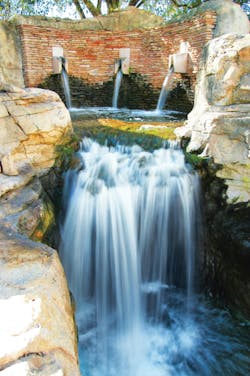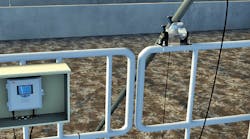Greg Flores is vice president of public affairs for the San Antonio Water System. Flores can be reached at [email protected] or 210.233.3247.
San Antonio is best known for the Riverwalk, the Alamo and authentic Mexican cuisine. The country’s seventh largest city, however, is also a national leader in water management and conservation. When it comes to water, the community’s sustainability and environmental stewardship efforts make San Antonio one of the most resourceful cities in the U.S.
San Antonians know that every drop counts. As the cheapest source of “new” water, conservation is a critical part of the city’s 50-year Water Management Plan. Through effective programs and incentives for residential and commercial customers, the community works to proactively conserve 1 billion gal of water annually as an alternative to capital-intensive supplies.
Upgrades & Incentives
High-efficiency toilets are provided to qualified homes at no cost, as are water-saving aerators and showerheads. Rebates also are available for homeowners who convert their water-guzzling lawns to landscapes of native, water-wise plants, trees and grasses.
Commercial customers can qualify for rebates of up to 50% on the cost of large-scale retrofits that significantly reduce water use while saving the customer money. The local Holiday Inn, for example, changed the fixtures in nearly 400 guest bathrooms to high-efficiency models, saving nearly 7 million gal of water every year and drastically reducing its water bill.
Entire school districts have been retrofitted with high-efficiency water fixtures, as have other hotels that cater to San Antonio’s downtown tourists. In all, more than 250,000 toilets have been distributed to residential and commercial customers.
With this kind of proven savings, conservation has become a cornerstone of the city’s water management strategy. San Antonio is now using the same amount of water as it did 25 years ago despite a 67% increase in service population.
Water Reuse
The city also boasts the nation’s largest direct recycled water system. More than 115 miles of purple pipe deliver up to 35,000 acre-ft per year of highly treated effluent as an alternative to potable water. From community golf courses and parks to commercial and industrial customers like CPS Energy, Toyota and Microsoft, more than 50 large-scale customers are using about 115 million gal of high-quality recycled water every day.
Recycled water is one key strategy to ensure water is available for economic growth and development in San Antonio. Every drop of water that is recycled and reused is water that does not have to be pumped from a freshwater aquifer.
In addition, recycled water is used in the city’s Riverwalk. It provides baseflows in the upper San Antonio River and Salado Creek, supplying critical flows that help aquatic ecosystems.
Biosolids Benefits
Water is not the only thing recycled in San Antonio. Last fall, San Antonio Water System introduced its “wastewater environmental trifecta”—a program to recycle and reuse the waste coming into the Dos Rios Water Recycling Center. The three parts of the program are as follows:
1. Recycled water provides an alternative source of water for many commercial, industrial and irrigation customers.
2. Biosolids are made into compost, which is used in landscaping, gardening and farming to improve soil quality. About 98% of biosolids are reused beneficially through compost production.
3. Biogas, or methane gas, is generated by biosolids during the sewage treatment process and captured and sold on the commercial market through a public-private partnership—the first waste-to-energy project of its kind in the nation. Through a 20-year partnership, a private company is treating at least 900,000 cu ft of biogas daily and selling it on the open market. In return, San Antonians receive a royalty on the gas sales, offsetting operational costs and keeping rates affordable.
Planning for Drought
Another major component of the community’s water management strategy is not visible to the naked eye: It is underground. San Antonio maintains one of the country’s largest aquifer storage and recovery facilities. During plentiful times, water from the Edwards Aquifer is pumped and piped 30 miles to the Twin Oaks Aquifer Storage and Recovery Facility, where it is stored underground in the Carrizo Aquifer. This underground reservoir currently holds more than 30 billion gal of water—half of the community’s annual water demand.
The stored water has proven to be a critical resource in times of drought. During extremely hot and dry conditions, the city uses the stored water supply to help reduce pumping from the highly regulated Edwards Aquifer. Up to 60 million gal per day help the city avoid severe outdoor watering restrictions.
San Antonio is constantly looking toward the future and working to provide alternative water sources to diversify the city’s long-term water supply and meet projected demand. The community’s first desalination plant is expected to come online in 2016, providing 11,800 acre-ft of water per year. Brackish water will be pumped and treated to drinking water standards using a reverse osmosis water treatment facility. When complete, San Antonio will produce about 10.5 million gal of water per day from an untapped ocean of water right under its feet.
With a constant focus on innovation and sustainability, San Antonio has evolved into a leader in water management. Fueled by dedication, determination and community pride, San Antonio has become a model in water resourcefulness.
Download: Here


